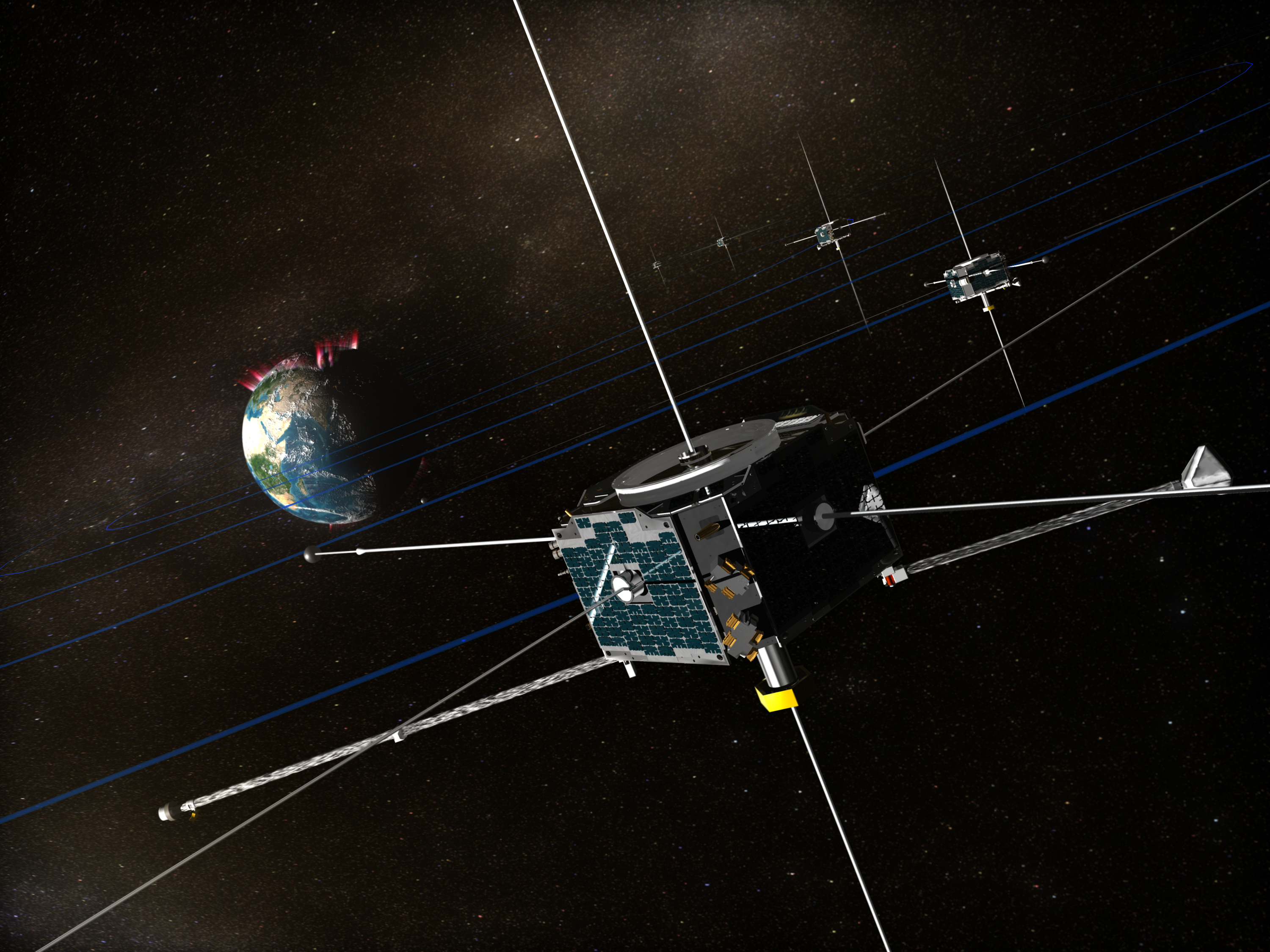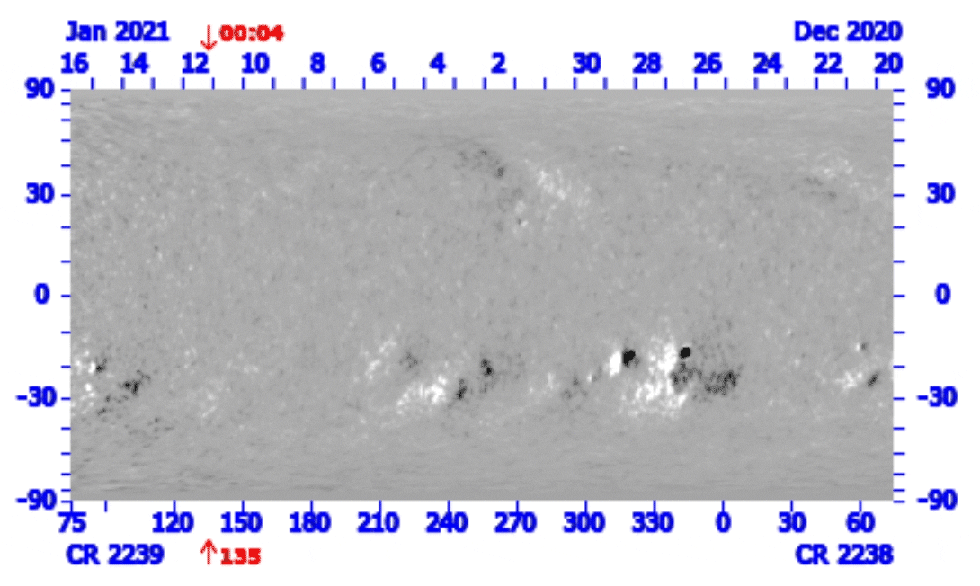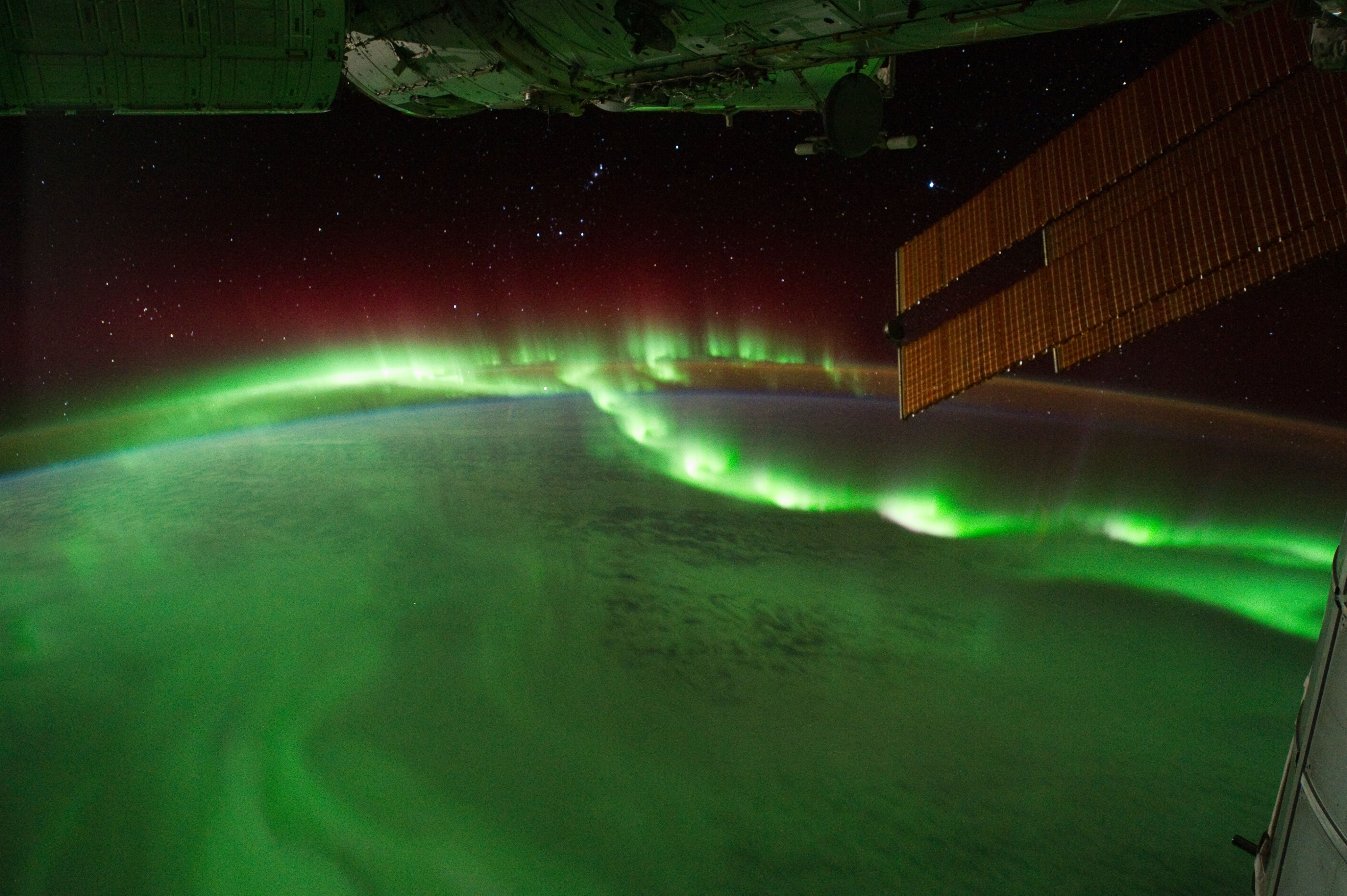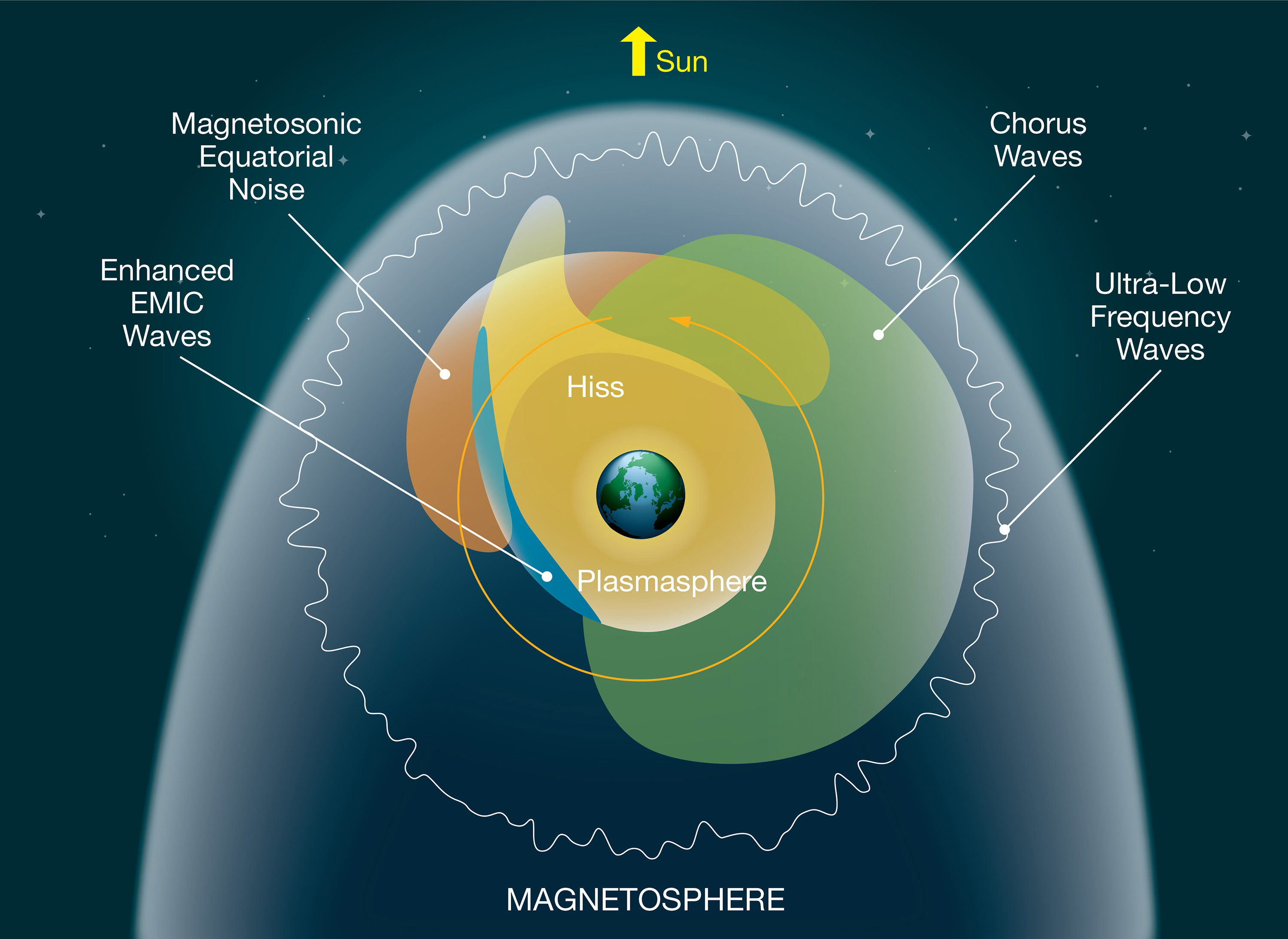THEMIS Science
Time History of Events and Macroscale Interactions During Substorms

THEMIS
The Time History of Events and Macroscale Interactions during Substorms —THEMIS — mission studies how mass and energy move through the near-Earth space environment in order to determine the details of what initiates the dancing lights of auroras near the poles. Prior to the THEMIS launch in 2007, scientists knew that auroras were caused by a space weather phenomenon known as a substorm — but not what initiated the substorms themselves. With THEMIS’s help, we now have a much better understanding of this space weather phenomenon, which can help us predict and mitigate space weather effects near Earth — including helping to ensure safety for astronauts and spacecraft operating around Earth.
Substorms occur in the magnetic fields in near-Earth space. They occur when the magnetosphere, the protective magnetic bubble surrounding Earth, suddenly releases vast amounts of energy. Some of the energy and particles lobbed away make it into Earth’s upper atmosphere where they create the Northern and Southern lights.
Substorms initially start small but spread across vast regions of the magnetosphere within minutes and typically accompany the most intense space weather — those that disrupt communications, cause power line transmission failures, and produce the most penetrating radiation.
Based on THEMIS observations, scientists now understand how the constant outpouring of solar material, called the solar wind, tangles Earth’s magnetic field, initiating substorms. Scientists also better understand the mysteries of why there are different types of auroras.
ARTEMIS
In 2010, after THEMIS successfully completed its prime mission, two of the five spacecraft were sent on a new path: into orbit around the Moon to begin the first systematic measurements of conditions in the magnetotail — the distant tail of Earth’s magnetic environment. (The three remaining THEMIS probes continue to orbit Earth, sending back valuable information to help scientists further understand substorms.)
The new mission, known as the Acceleration, Reconnection, Turbulence and Electrodynamics of the Moon’s Interaction with the Sun, or THEMIS-ARTEMIS, took its name from the Greek goddess of the Moon.
THEMIS-ARTEMIS now trailblazes new science at the Moon, while also helping to contextualize THEMIS discoveries. In addition to studying the lunar space environment, THEMIS-ARTEMIS investigates the Moon’s surface composition, magnetic field and core structure.
Working in tandem with other missions like the Magnetospheric Multiscale, or MMS, mission, THEMIS-ARTEMIS helps form a complete picture of an event known as magnetic reconnection. Magnetic reconnection occurs when the Sun's and Earth's magnetic fields connect and disconnect, explosively transferring energy from one to the other. This process occurs throughout the universe, so by studying reconnection in this local, natural laboratory, scientists can understand reconnection elsewhere as well, such as in the atmosphere of the Sun and other stars, in the vicinity of black holes and neutron stars, and at the boundary between our solar system's heliosphere and interstellar space, where it’s harder to study.
THEMIS-ARTEMIS’ unique location in the distant tail of Earth’s magnetic field provides an unprecedented vantage point to study how particles are accelerated away from reconnection sites in the magnetotail. Its orbit also allows THEMIS-ARTEMIS to study how turbulence affects the interface region between the magnetotail and the solar wind.
THEMIS-ARTEMIS simultaneously studies the thin lunar atmosphere through observations of electric and magnetic fields, which cause ions to be ejected from the Moon’s atmosphere and surface. The twin spacecraft also study the lunar surface using electromagnetic sounding. Through these investigations, THEMIS-ARTEMIS plays a key role in helping scientists prepare for future human exploration of the Moon.








